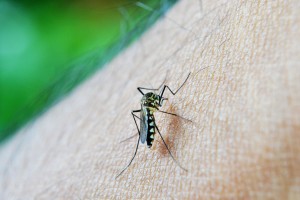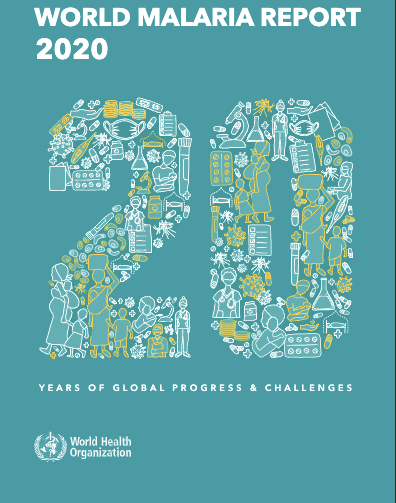
Global malaria gains threatened by access gaps, COVID-19 and funding shortfalls
Geneva: A better targeting of interventions, new tools and increased funding are needed to change the global trajectory of the disease and reach internationally-agreed targets, the World Health Organisation’s latest World Malaria Report, released today, has stated. According to the report, progress against malaria continues to plateau, particularly in high burden countries in Africa. Gaps in access to life-saving tools are undermining global efforts to curb the disease, and the COVID-19 pandemic is expected to set back the fight even further.

“It is time for leaders across Africa – and the world – to rise once again to the challenge of malaria, just as they did when they laid the foundation for the progress made since the beginning of this century,” said WHO Director-General Dr Tedros Adhanom Ghebreyesus. “Through joint action, and a commitment to leaving no one behind, we can achieve our shared vision of a world free of malaria.”
In 2000, African leaders signed the landmark Abuja Declaration pledging to reduce malaria deaths on the continent by 50% over a 10-year period. Robust political commitment, together with innovations in new tools and a steep increase in funding, catalyzed an unprecedented period of success in global malaria control. According to the report, 1.5 billion malaria cases and 7.6 million deaths have been averted since 2000.
A plateau in progress
In 2019, the global tally of malaria cases was 229 million, an annual estimate that has remained virtually unchanged over the last 4 years. The disease claimed some 409 000 lives in 2019 compared to 411 000 in 2018.
As in past years, the African Region shouldered more than 90% of the overall disease burden. Since 2000, the region has reduced its malaria death toll by 44%, from an estimated 680 000 to 384 000 annually. However, progress has slowed in recent years, particularly in countries with a high burden of the disease.
A funding shortfall at both the international and domestic levels poses a significant threat to future gains. In 2019, total funding reached US $3 billion against a global target of $5.6 billion. Funding shortages have led to critical gaps in access to proven malaria control tools.
COVID-19 an added challenge
In 2020, COVID-19 emerged as an additional challenge to the provision of essential health services worldwide. According to the report, most malaria prevention campaigns were able to move forward this year without major delays. Ensuring access to malaria prevention – such as insecticide-treated nets and preventive medicines for children – has supported the COVID-19 response strategy by reducing the number of malaria infections and, in turn, easing the strain on health systems. WHO worked swiftly to provide countries with guidance to adapt their responses and ensure the safe delivery of malaria services during the pandemic.
However, WHO is concerned that even moderate disruptions in access to treatment could lead to a considerable loss of life. The report finds, for example, that a 10% disruption in access to effective antimalarial treatment in sub-Saharan Africa could lead to 19 000 additional deaths. Disruptions of 25% and 50% in the region could result in an additional 46 000 and 100 000 deaths, respectively.
“While Africa has shown the world what can be achieved if we stand together to end malaria as a public health threat, progress has stalled,” said Dr Matshidiso Moeti, WHO Regional Director for Africa. “COVID-19 threatens to further derail our efforts to overcome malaria, particularly treating people with the disease. Despite the devastating impact COVID-19 has had on African economies, international partners and countries need to do more to ensure that the resources are there to expand malaria programmes which are making such a difference in people’s lives.”
WHO response
A key strategy to reignite progress is the “High burden to high impact” (HBHI) response, catalyzed in 2018 by WHO and the RBM Partnership to End Malaria. The response is led by 11 countries – including 10 in sub-Saharan Africa – that account for approximately 70% of the world’s malaria burden.
Over the last 2 years, HBHI countries have been moving away from a “one-size-fits all” approach to malaria control – opting, instead, for tailored responses based on local data and intelligence. A recent analysis from Nigeria, for example, found that through an optimized mix of interventions, the country could avert tens of millions of additional cases and thousands of additional deaths by the year 2023, compared to a business-as-usual approach.
While it is too early to measure the impact of the HBHI approach, the report finds that deaths in the 11 countries were reduced from 263 000 to 226 000 between 2018 and 2019. India continued to make impressive gains, with reductions in cases and deaths of 18% and 20%, respectively, over the last 2 years. There was, however, a slight increase in the total number of cases among HBHI countries, from an estimated 155 million in 2018 to 156 million in 2019.
Meeting global malaria targets
This year’s report highlights key milestones and events that helped shape the global response to the disease in recent decades. Beginning in the 1990s, leaders of malaria-affected countries, scientists and other partners laid the groundwork for a renewed malaria response that contributed to one of the biggest returns on investment in global health.
According to the report, 21 countries eliminated malaria over the last 2 decades; of these, 10 countries were officially certified as malaria-free by WHO. In the face of the ongoing threat of antimalarial drug resistance, the 6 countries of the Greater Mekong subregion continue to make major gains towards their goal of malaria elimination by 2030.
But many countries with a high burden of malaria have been losing ground. According to WHO global projections, the 2020 target for reductions in malaria case incidence will be missed by 37% and the mortality reduction target will be missed by 22%.
It may be noted that WHO’s work on malaria is guided by the Global technical strategy for malaria 2016-2030 (GTS), approved by the World Health Assembly in May 2015. The strategy includes four global targets for 2030, with milestones along the way to track progress. The 2030 targets are: 1) reducing malaria case incidence by at least 90%; 2) reducing malaria mortality rates by at least 90%; 3) eliminating malaria in at least 35 countries; and 4) preventing a resurgence of malaria in all countries that are malaria-free.
Near-term GTS milestones for 2020 included global reductions in malaria case incidence and death rates of at least 40% and the elimination of malaria in at least 10 countries. According to the report, the 2020 milestones for malaria case incidence and mortality rates would be missed:
– Case incidence: WHO projects that, in 2020, there were an estimated 56 malaria cases for every 1000 people at risk of the disease against a GTS target of 35 cases. The GTS milestone will be missed by an estimated 37%.
– Mortality rate: The estimate for globally projected malaria deaths per 100 000 population at risk was 9.8 in 2020 against a GTS target of 7.2 deaths. The milestone will be missed by an estimated 22%.
WHO African Region – Since 2014, the rate of progress in both cases and deaths in the region has slowed, attributed mainly to the stalling of progress in several countries with moderate or high transmission. In 2019, six African countries accounted for 50% of all malaria cases globally: Nigeria (23%), the Democratic Republic of the Congo (11%), United Republic of Tanzania (5%), Niger (4%), Mozambique (4%) and Burkina Faso (4%). In view of recent trends, the African Region will miss the GTS 2020 milestones for case incidence and mortality by 37% and 25%, respectively.
“High burden to high impact” (HBHI) – Launched in November 2018, HBHI builds on the principle that no one should die from a disease that is preventable and treatable. It is led by 11 countries that, together, accounted for approximately 70% of the world’s malaria burden in 2017: Burkina Faso, Cameroon, Democratic Republic of the Congo, Ghana, India, Mali, Mozambique, Niger, Nigeria, Uganda and United Republic of Tanzania. Over the last two years, all 11 HBHI countries have implemented activities across four response elements: 1) political will to reduce the toll of malaria; 2) strategic information to drive impact; 3) better guidance, policies and strategies; and 4) a coordinated national malaria response
Malaria elimination – Between 2000 and 2019, 10 countries received the official WHO certification of malaria elimination: United Arab Emirates (2007), Morocco (2010), Turkmenistan (2010), Armenia (2011), Kyrgyzstan (2016), Sri Lanka (2016), Uzbekistan (2018), Paraguay (2018), Argentina (2019) and Algeria (2019). In 2019, China reported zero indigenous cases of malaria for the third consecutive year; the country recently applied for the official WHO certification of malaria elimination. In 2020, El Salvador became the first country in Central America to apply for the WHO malaria-free certification
In the six countries of the Greater Mekong subregion – Cambodia, China (Yunnan Province), Lao People’s Democratic Republic, Myanmar, Thailand and Viet Nam – the reported number of malaria cases fell by 90% from 2000 to 2019, while P. falciparum (Pf) cases fell by 97% in the same time period. This accelerated decrease in Pf malaria is notable in view of the threat posed by antimalarial drug resistance in the subregion.
A call for innovation – Eliminating malaria in all countries, especially those with a high disease burden, will likely require tools that are not available today. In September 2019, the WHO Director-General issued a “malaria challenge,” calling on the global health community to ramp up investment in the research and development of new malaria-fighting tools and approaches. This message was further reinforced in the April 2020 report of the WHO Strategic advisory group on malaria eradication.
– globalbihari bureau





